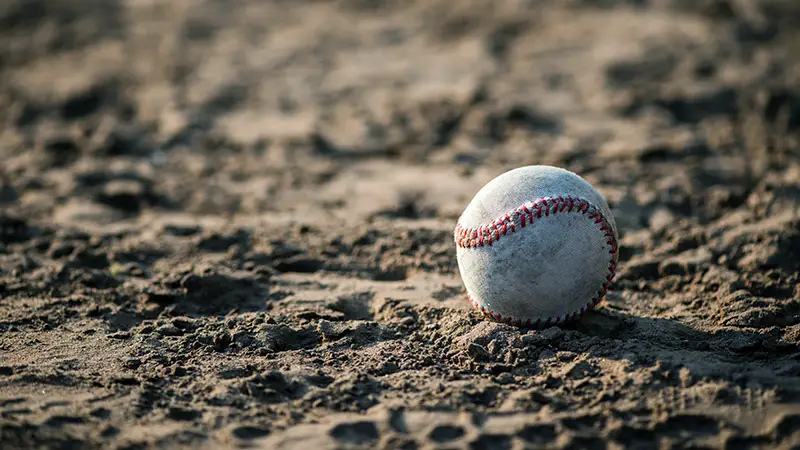Understanding what constitutes a fair ball in baseball can be perplexing, especially when you’re in the stands watching a game unfold.
Unlike football, where sideline catches often define the play, baseball’s rules hinge on where the ball is when it’s first touched by a fielder.
If the ball is over fair territory when first touched, it’s a fair ball; if over foul territory, it’s a foul ball. Simple, right?
Yet, this rule often confuses even seasoned fans. The distinction is crucial because it determines whether the batter continues their run or the play is halted.
Knowing the nuances of fair and foul balls can enrich your appreciation of the game and deepen your understanding of those split-second decisions made by umpires.
Let’s dive into the specifics and clear up any misconceptions you might have about this fundamental aspect of baseball.
Fair Ball in Baseball
A fair ball in baseball is essential for players, coaches, umpires, and fans.
Here are the key aspects that determine whether a ball is fair:
Definition and Basic Rules
A fair ball in baseball meets specific criteria defined by the Official Baseball Rules (OBR).
A batted ball is fair if it:
- Settles on fair ground between home plate and first base or between home plate and third base.
- Bounces past first or third base on or over fair territory.
- Touches first, second, or third base.
- Comes to rest on fair ground beyond first or third base.
- Leaves the playing field in-flight in fair territory (e.g., a home run).
How It Differs From Foul Balls
A foul ball doesn’t meet the criteria for a fair ball and results in different on-field actions.
A batted ball is foul if it:
- Settles on foul territory between home plate and first base or between home plate and third base.
- Bounces and stops or is first touched in foul territory beyond first or third base.
- Passes first or third base on or over foul territory.
Foul balls either result in a dead ball or continue as live depending on how the ball is interacted with after being classified as foul.
It’s essential to note the distinction between a foul tip and foul ball: a foul tip must be caught by the catcher to be considered a valid strike, while a foul ball cannot be caught to change its status.
Factors Determining a Fair Ball
In baseball, several factors determine whether a batted ball is considered fair.
Understanding these factors is crucial for players, coaches, umpires, and fans alike:
Role of Base Lines
Base lines serve as crucial indicators in determining whether a ball is fair. Any part of the ball touching the base lines is fair.
This includes cases where the ball rolls or bounces along the lines. For instance, if a ball lands in the infield and then crosses the foul line before reaching first or third base, it remains fair as long as it touches the line at any point.
The foul lines themselves are considered part of fair territory, extending from home plate to the outfield fence.
Impact of Ball Contact with Objects and Players
The interaction between the ball and other entities on the field, such as objects and players, plays a significant role. A ball that touches a player or umpire in fair territory is immediately considered fair.
This rule holds true regardless of subsequent actions. For example, a ground ball striking the pitcher’s rubber and then bouncing into foul territory remains in a gray area, often leading to disputes.
While some argue for its fairness based on initial contact, others contest it due to its final position.
Additionally, immobile objects like base markers or the foul pole, being part of fair territory, can turn potential foul balls into fair ones upon contact.
Judging Complex Situations
Complex situations arise, especially when balls are hit near the foul lines or interact with fielders at high speeds.
An example includes a fielder attempting to catch a fly ball near the foul line but missing it this could change the ball’s status based on where it first lands post-contact.
With base runners ready to act, umpires must often rely on quick judgments without video assistance. Understanding these nuanced scenarios allows you to appreciate the game’s strategic depth and the critical decisions umpires face.
| Situation | Determination |
|---|---|
| Ball touches base lines | Fair |
| Ball hits foul pole | Fair |
| Ball hits player/umpire in fair territory | Fair |
| Ball hits pitcher’s rubber and bounces foul | Context-dependent, often disputed |
| Fielder first touches ball in fair territory but misses | Fair if original contact is in fair territory |
Historical Context and Importance
The concept of a fair ball in baseball has evolved significantly since the game’s inception. The distinction between fair and foul balls is crucial in maintaining the integrity and structure of the game, ensuring a clear and consistent set of rules for players, coaches, and fans.
Evolution of the Fair Ball Rule
The fair ball rule has evolved significantly since baseball’s inception. Initially, any ball that touched fair territory at any point was deemed fair.
This broad definition caused numerous disputes, as balls often bounced from fair territory into foul ground and vice versa. To address these issues, the rule was refined over the years to provide clearer guidelines.
Today’s rules specify that a ball’s status is determined by its position relative to the foul lines and bases at specific points during its trajectory, dramatically improving the game’s consistency and fairness.
Key Game Results Influenced by Fair Ball Calls
Fair ball calls have influenced many game outcomes throughout baseball history. For example, in a crucial playoff game, a controversial fair ball call down the third-base line became the deciding factor, allowing the batting team to score the winning run.
In another instance, a disputed fair ball that hit the foul pole resulted in a home run that shifted the momentum of the World Series.
These instances underscore the importance of accurate fair ball judgments, as they can directly affect championship outcomes and the sport’s competitive integrity.
Frequently Asked Questions
Is the chalk line fair or foul?
A ball hitting the chalk line in baseball is a fair ball. This rule ensures consistency in determining the ball’s status based on its contact with marked lines.
Is a line drive fair or foul?
A line drive over the bag that lands in foul territory is foul. If the ball bounces in front of home plate, goes over the bag, and then lands in foul territory, it is fair.
What is the most nasty pitch in baseball?
Abner Uribe’s four-seam fastball is considered one of the nastiest pitches. It averages 100.7 mph and can reach up to 103.3 mph, making it overpowering.
What is a fair ball in baseball?
A fair ball is one that first contacts a fielder in fair territory or first contacts the field in fair territory beyond first or third base. The foul lines and foul poles are considered part of fair territory.
What happens if you beat up an umpire?
Arguing with or starting a fight with a referee leads to a game misconduct, resulting in ejection for the offending player or coach. A warning and minor penalty may precede this action.
Conclusion
Understanding the nuances of fair and foul balls is essential for any baseball enthusiast. The distinctions set by the Official Baseball Rules not only impact gameplay but also enhance your appreciation of the sport.
Historical refinements to the fair ball rule have made the game more consistent and fair. Accurate fair ball judgments are crucial in maintaining competitive integrity, often influencing key game outcomes.
By grasping these concepts, you’ll gain a richer insight into baseball’s intricate rules and enjoy the game on a deeper level.
One critical aspect to remember is that a ball is deemed fair if it lands in the infield and remains within the boundaries, or if it lands in the outfield in fair territory.
Understanding these specifics ensures that you recognize pivotal moments in a game and appreciate strategic plays.








Pat Bloom